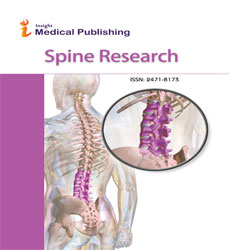Abstract
Multi-Level Lumbar Disc Replacements: Review of the Specificities and Difficulties of the Surgical Technique
Purpose: Lumbar disc replacement is a seducing therapeutic option to address the isolated discogenic disc disease in young patients. While of relatively recent creation, the technique of implantation of a single-level disc replacement is now widely disseminated. Because of promising results, it is now frequent to observe an increase of the number of lumbar discs replaced during a single procedure. Hence, several publications reported cases of lumbar disc replacements at two or three levels. However, we feel that multi-level lumbar disc replacements should not be approached as the sum of several one-level lumbar disc replacements. Methods: It seems interesting to highlight some aspects of the surgical technique of multi-level lumbar disc replacements in order to improve their implantation. In this study, we aimed to present the specificities and difficulties of the surgical technique for multi-level lumbar disc replacements. Results: First, we reviewed the common aspects of any lumbar disc replacement, then the specific points of the multi-level ones. Specific caution must be taken during the necessary wide surgical approach, especially with the vascular components, and with the sequence used to implant the different arthroplasties. Finally, a specific care must be taken to choose the adequate type of arthroplasty in order to equilibrate the lumbar lordosis, which will not be adjusted by the adjacent native discs. We illustrated these descriptions with clinical examples from our practice. Conclusion: multi-level lumbar disc replacements necessitate a specific surgical technique in order to optimize the implantation, to improve the results, and to reduce complications.
Author(s):
Raphal Pietton,Jean-Charles Aurgan,Philippe Cottin and Thierry Begue
Abstract | Full-Text | PDF
Share this

Google scholar citation report
Citations : 128
Spine Research received 128 citations as per google scholar report
Abstracted/Indexed in
- Google Scholar
- China National Knowledge Infrastructure (CNKI)
- Directory of Research Journal Indexing (DRJI)
- WorldCat
- International Committee of Medical Journal Editors (ICMJE)
- Secret Search Engine Labs
- Euro Pub
Open Access Journals
- Aquaculture & Veterinary Science
- Chemistry & Chemical Sciences
- Clinical Sciences
- Engineering
- General Science
- Genetics & Molecular Biology
- Health Care & Nursing
- Immunology & Microbiology
- Materials Science
- Mathematics & Physics
- Medical Sciences
- Neurology & Psychiatry
- Oncology & Cancer Science
- Pharmaceutical Sciences

